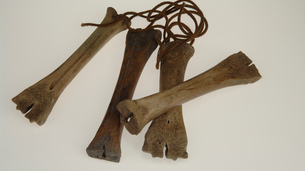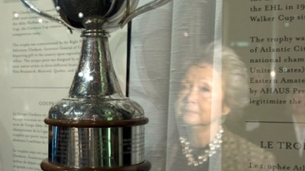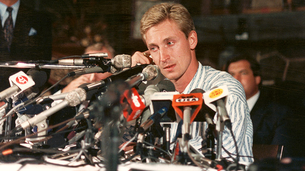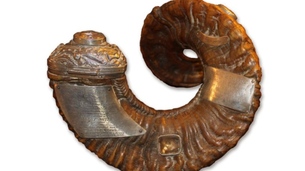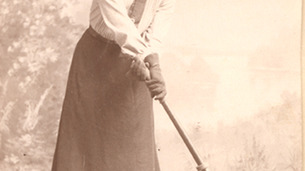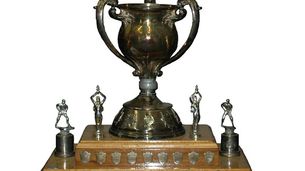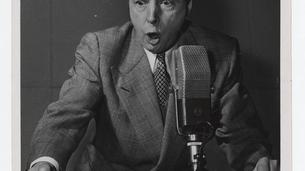Adrienne Louise Clarkson PC CC CMM COM CD FRSC(hon) FRAIC(hon) FRCPSC(hon) (Chinese: 伍冰枝; née Poy, February 10, 1939) is a Canadian journalist and stateswoman who served as Governor General of Canada, the 26th since Canadian Confederation.
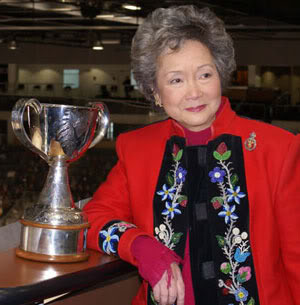
Clarkson arrived in Canada with her family in 1941 as a refugee from Hong Kong and was raised in Ottawa, Ontario. After receiving a number of university degrees, Clarkson worked as a producer and broadcaster for the Canadian Broadcasting Corporation (CBC) and a journalist for various magazines. Her first diplomatic posting came in the early 1980s, when she promoted Ontario culture in France and other European countries. She was in 1999 appointed as governor general by Queen Elizabeth II, on the recommendation of Prime Minister of Canada Jean Chrétien, to replace Roméo LeBlanc as viceroy, and she occupied the post until succeeded by Michaëlle Jean in 2005.
Clarkson was the first visible minority to be appointed governor general, as well as the second female (after Jeanne Sauvé), the first Chinese Canadian, and the first without a military or political background. She was also the second person to have been appointed to the Order of Canada prior to nomination as governor general-designate, after Jules Léger.
When the 2004–05 NHL season was cancelled because of lockout, the Stanley Cup was not awarded for the first time since the 1918-19 Spanish Flu pandemic. In February 2005, Clarkson proposed that, since the Stanley Cup was to be awarded to the best professional Hockey team of the year (even though there were Canadian teams in the American Hockey League, which plays for the Calder Cup), it should be awarded to the best women's Hockey team because they were still playing. That idea was brought to Susan Fennell, the Commissioner of the National Women's Hockey League (and also Mayor of Brampton). In a media interview, Fennell commented that while the women had great respect for the Stanley Cup, it belonged to men's Hockey, and that the women actually did have a cup of their own, but simply one with no name. Fennell then came up with the idea that the Governor General should consider lending her name to the women's Hockey championship cup, as Lord Stanley had done years before for the men's Hockey championship. Clarkson was thrilled with the idea and later met with Fennell at Rideau Hall, where it was agreed that the women's Hockey championship trophy would be named the Clarkson Cup.
On September 14, 2005, outgoing Governor General Adrienne Clarkson had announced she's creating a new trophy in her own name for women's Hockey.
The Clarkson Cup is made of silver and was designed by Senior Instructor of the Fine Arts and Crafts Program of Nunavut Arctic College in Iqaluit. Canadian silversmith Beth M. Biggs was commissioned to make the Clarkson Cup. She designed and built the sterling trophy and collaborated with three Inuit artists: Okpik Pitseolak, Therese Ukaliannuk, and Pootoogook Qiatsuk.

Because of technical requirements, the Cup was produced in 3 locations in Canada. The stem and handles were hand made by Biggs at the Metals Studio of Brigitte Clavette RCA, at the New Brunswick College of Craft and Design in Fredericton. The main cup was spun by Mathieu Isabelle in Montreal at Desmarais & Robitaille Silversmiths, where the reproduction of the Stanley Cup was made. Once the construction of the Cup was completed the Cup was brought to Nunavut for the decoration of the surface of the Cup..
Biggs, who was recently elected to membership in the Royal Canadian Academy of Arts in recognition of her outstanding artistic achievements in the visual arts in Canada, knew she wanted to make a cup that was classically beautiful and feminine. The design of the cup is clearly classical with a large central cup and handles on each side. The stem of the cup is slender and gracefully supports the Cup. The handles, which are hollow formed by synclastic sinking, give the cup a posture of confidence and stature. There is definitely a sense of contentment and celebration about the object. The images on the cup are a blend of native and non-native designs.

The Clarkson Cup bears Adrienne Clarkson’s coat of arms on one side and on the other the image of the Inuit goddess Sedna who is the mother of all creatures of the sea and has dominion over all the creatures in the sea. Sedna is the most powerful spirit of the ocean with her home on the ocean floor. She has the head and torso of a woman and the tail of a fish. On the Cup Sedna is portrayed holding a Hockey stick in one hand and a puck in the other, lending her strength to the power of women’s Hockey.
Madame Clarkson wanted this image of the North on our women’s Hockey cup because without the North she stated that we would not have ice and snow and we would not have invented the game of Hockey. She felt that the source of our strength in this game lies in our strength as a Northern nation and our ability to make ice the heart of our beloved national game.
The pedestal is engraved with Hockey type masks and base engraved with flowers of each Province in Canada.
The Clarkson Cup was first awarded to the Canadian national women's Hockey team on July 10, 2006, with the expectation that Hockey Canada would take over the trophy and how it was to be awarded. However, complications arising due to the rights to the trophy (Clarkson wanting full rights to the trophy from the artists in order to turn the trophy over to Hockey Canada, while the artists wanting Hockey Canada to instead license the Cup in order to collect royalties from its use) and the splintered top level of women's club Hockey at the time resulted in the trophy not being awarded for three years.
At the time of the creation of the Clarkson Cup, there were two top professional women's Hockey leagues in Canada: the National Women's Hockey League in Eastern Canada and the Western Women's Hockey League in Western Canada (with one team from Minnesota) — the latter being formed from two former NWHL teams (the Calgary Oval X-Treme and Edmonton Chimos) due to travel costs, with no interleague championships to determine a true national champion. Though the two leagues were expected to merge in 2007 (with the five-team WWHL being absorbed into the 11-team NWHL as a new "western division"), logistics differences (due to playoff scheduling) made the merger impossible — the WWHL playoffs were finished before the Esso Women's Nationals, while the NWHL playoffs had yet to begin (and would not conclude until after the Nationals and the world championships). The NWHL folded at the conclusion of the 2006-07 season, with theCanadian Women's Hockey League taking its place. Though the CWHL and WWHL agreed on a format that would determine a national champion (to be decided with each league sending its two best teams to the Esso Women's Nationals, with the intent that it would be split off as a separate tournament from the senior women's tournament in the future), the Clarkson Cup remained unavailable — the Abby Hoffman Cup would be awarded in its place until the Clarkson Cup became available.
In March 2009, Clarkson and the artists behind the Clarkson Cup settled their licensing dispute, allowing the trophy to be presented. The inaugural Canadian National Women's Hockey Championship was held later that month, at the K-Rock Centre in Kingston, Ontario, featuring an identical format to that used for the Esso Women's Nationals the previous year for club teams. The Montreal Stars, champions from the East, prevailed over the Minnesota Whitecaps in the finals of the championship, which also saw the Brampton Canadettes-Thunder and theCalgary Oval X-Treme participate. Clarkson was on hand to present the trophy to the Stars upon their victory. Like the first Stanley Cup champion of 1893, the first Clarkson Cup champions come from Montreal, Canada.
Adrienne Clarkson donated the Clarkson Cup to The Hockey Hall of Fame in Toronto, Ontario in March 2013 for a permanent home for the trophy and it's safe keeping.
"I just feel so wonderful when I think that long after I'm gone, this Cup will be in this case at the Hockey Hall of Fame," Clarkson said. "It's for the ages and it's for the future."
"It's not only a great day for women's Hockey, it's a great day for Hockey," said Phil Pritchard, vice-president and curator of the Hockey Hall of Fame. "Hockey is Canada's game and we want to preserve the sport as a whole. The Clarkson Cup has such a rich Hockey heritage and we are excited to bring it here."

